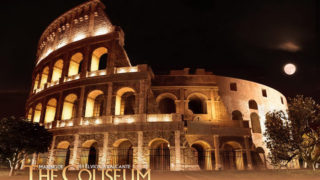
The Making of Mazda RX-8
This is not a complete walkthrough tutorial, as it takes a lot of time to make one and besides, I have already finished the model quite a while ago. I will, however, try to give you some insight at how it was created from modelling to rendering so that it might provide you with some valuable tips when starting your own projects. Of course, my methods are not necessarily correct as I am also still learning.
 |
||
 |
The Making of Mazda RX-8September 06 , 2005 | Stryker This is not a complete walkthrough tutorial, as it takes a lot of time to make one and besides, I have already finished the model quite a while ago. I will, however, try to give you some insight at how it was created from modelling to rendering so that it might provide you with some valuable tips when starting your own projects. Of course, my methods are not necessarily correct as I am also still learning. The model was created in 3ds max and rendered with Brazil rendering system, so the tutorial will mostly concentrate on these applications. The modelling section might be a bit boring for non-beginners, but it gets better. Most of you might be more interested in the materials, lighting and rendering parts of the tutorial. Let us begin.. ModellingMy favourite modelling techniques are poly and box modelling. I use poly modelling for creating the main body of the car. Most beginners ask the question where to start. There is no single answer; actually you can start anywhere you want. I usually start with the headlights. First, you create a plane object with 1 segment, convert it to an editable poly and move the vertices into position. Then you start extruding edges. You do this by selecting an edge, holding shift and dragging it. This gives you a new poly. Yes, now you have only two, but don’t give up yet. The goal here is to create a simple unique mesh for the whole body. The edges have to follow the lines on the blueprints so that you can detach the polies belonging to different car parts like doors, hood etc. If you want, you can build the parts separately, but it is good to start from the edges of the adjacent parts so that you have nice smooth meshes when you subdivide them. Important things to remember are that you are creating only one side of the car that you later going to mirror to the other side and that you have to forget about the smallest details for now, you will add them later. This is because if you have a dense mesh it can become difficult to control its smoothness after adding mesh/turbosmooth modifier and you can get unwanted bumps. After all this text it’s time for a picture.=) This is what my model looks like after completing the initial modelling and detaching the separate parts. Now that you have all these objects with no depth it’s time to start adding all the details. First you have to add the solidify modifier to give them some thickness. Now either collapse the stack or add a new edit poly modifier. You should already add the meshsmooth or turbosmooth modifier with 2 iterations so that you can see the changes you make (also click the âshow end result toggle’ button). To get rid of the overall smoothness, you have to select all the edges you want to make sharper, and the important thing here is to select them all at once if they are connected in any way so that you don’t get any weird bumps on the smoothed model later. When you have selected them, use the chamfer tool with the lowest setting possible. It should look ok, but no matter how low you set it to be, the resulting edges are still going to have some smoothness. This is great for moderately sharp edges on the body, but if you want sharper edges along the door seams you can use the edge crease instead of chamfering; this will give you very sharp edges which can be more realistic depending on your model. Also, by creating creases you don’t get any extra polygons like you do with chamfering. Just try it and you will see the difference and decide which you want to use. You can also combine both. Experiment. Now it’s time to mirror all the parts to the other side. Select all of your objects, go to the hierarchy tab and enable affect pivot only, select the Select and move tool, right-click it and zero-out the X value (right click the spinner or just write in 0) and mirror. For the middle parts like the hood and roof, first get rid of the turbosmooth modifier before mirroring, then select all the vertices that are going to be welded with the mirrored copy, right-click the Select and non-uniform scale tool and right-click the X value’s spinner (this is while working in perspective viewport because the axes change when in different orthographic vieports). This will align all the vertices in a straight row and now you can do the same thing with the Select and move tool to put them all on the 0 position in X axis. Mirror, attach, weld, smooth. A little explanation: turbosmooth is just a faster version of meshsmooth modifier, but even if you don’t have max7, you can still speed up your viewports a lot simply by adding an Edit Mesh (not edit poly!) modifier on the top of the stack. This is my model without smoothing:
I use box modelling for creating almost everything else on the car except the body. It is quick and provides you with a basic model that you can easily modify to create almost anything. The process begins with creating a primitive object (usually a box, cylinder, sphere etc.), you give it as many segments as you initially need, than convert it to an editable poly and use all the tools at your disposal to create the model, cutting polygons, moving vertices, etc. Be sure to use the selection tools at the top of the editable poly modify tab (shrink, grow, ring and loop), they can be invaluable especially when working with edges. This is what my interior looks like
|
 |
 |
||
 |
Creating simple stitching seams on seatsFirst select an edge and loop it along the edge loop (or just select those edges) where you want to create the seam, chamfer it, select the polygons inside, inset them and extrude them. If you encounter the problem seen in the following image, simply increase vertex weighting on the vertices in the corner. As you can see, I have added some noise after the turbosmooth modifier (don’t use large values and do use the scale spinner to get better results; I didn’t even know that this existed before, now I see that the noise modifier isn’t as bad as I thought it was=) and the relax modifier to make up for the roughness.
Modelling lightsI have found that it is better to model the lights completely instead of just using bump maps. This is more accurate because real lights are smooth on the outside and only have those âbumps’ on the inside. This is why I have decided to model them. You do this by dividing your mesh in any way so that you get a lot of smaller polies. Now you select the ones on the inside, use the inset tool (by polygon) and then extrude them. Look at the image of this simple example
MaterialsThis part is closely connected with lighting and rendering, so check that out too. Car paint This is a Brazil Basic material that simulates the metallic paint. NB: I and many other people have noticed that this same material just looks âwrongâ when used with darker and more saturated colours other than white or grey, but with these it looks really good. Here are the settings I have used (you can set the specular value even higher, or lower, experimentâ¦)
Chrome For chrome on the light reflectors I have used Brazil Chrome material with default settings, and for the rims and some interior chrome parts I have used the same material with Glossy reflection control enabled. For some other metallic parts I have used a simple material with no reflections with the specular value of 280 and glossiness value of 10. Glass For all of the glass I have used Brazil glass material with default settings. There’s something very important to know about glass. A friend of mine was having trouble with too much refraction he was getting from the glass material. The problem was that his windows were flat planes, they didn’t have any thickness. Add the solidify modifier, your model has to be more like a box, not a plane, it has to have both the front and back polygons. In real life the ray of light refracts when passing through the border between two mediums (in this case glass and air) due to the difference in their density. This means that it refracts twice, first when hitting the glass surface and entering it, and the second time when it exists the glass and enters air again. This straightens it back a bit, so without the second surface the angle would just be too large. But let’s not get into physics any deeper as I’m no expert. I’m not sure if this is needed in the default scanline renderer, but it is for Brazil and V-ray. Lighting and RenderingFirst I wanted to use Brazil area light, which is more physically correct, but it increased the rendering time a lot and put a lot of grain on my glass material. Instead, I just used the default target directional light with simple shadow mapped shadows and put it above and to the left of the model to act as key light (the sun). This light is also necessary for the car paint material to look the way we want it to. The default settings might be wrong for your scene (the light cone might be too small), to correct this just enable overshoot which will make it cast light outside of the cone, or just select the light and uniformly scale it like you would any other object (this will only enlarge the cone) and make the cone encompass the whole scene. By the way, the multiplier is set to 0,8 and colour to amber/light orange. For fill light I used brazil skylight (only direct illumination) in the luma server. Multiplier is 0,5, and colour light blue. I have used an HDR image only in the max environment for the reflections. Fake caustics from the rims I have created a spotlight for each rim for this purpose and enabled the inverse square decay â simply put, this makes the light lose power with distance. In the advanced effects rollout, I have added a monochrome noise map in the projector map slot. This makes the light project⦠um, light only from the white area of the map. I cannot tell you how to create this map as it depends on the shape of your objects that are causing caustics and mine are totally incorrect anyway. You can always use real caustics instead at the cost of rendering time. Fake shine effect from the sun I put the rendered image in the background, created omni lights in the right positions, and added the lens effects ray, rendered only their alphas which I later composited in Photoshop. Post workI’ve done this in Photoshop. All I did was to add the aforementioned fake shine effect and some layer mixing and colour correction. OK, I’ll tell you exactly what I did. I copied the image layer, added gaussian blur (value 3,6) to that, changed its blending mode to overlay with the opacity of around 22% and merged it. Then I copied the one layer again and changed the top layer blending mode to screen (20 to 40 percent, depending on the shot and my mood or whateverâ¦=), then I colorized this layer with these values: Hue : 81, Saturation: 42. After that I added just a little diffuse glow, not too much. The End. If you have any questions feel free to contact me, if I’ll have the time, I just might answer them⦠=) Download PDF version of this article here 3DM models creation |
 |













